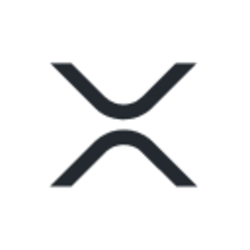- Ripple is set to reset the XRP Ledger Testnet on August 19, 2024, aiming to enhance stability, cut node operation costs, and bolster security.
- This move has invited speculation, particularly around the testing of tokenized US Treasury bills, as Ripple commits $10 million to support this project.
- The reset will be brief, lasting around 15 minutes, and during this period, the Testnet may be inaccessible to developers.
Ripple is set to reset the XRPL Testnet on August 19, 2024, focusing on stability and cost efficiency amid tokenization testing theories.
Ripple Announces XRPL Testnet Reset
Ripple has officially announced that the XRP Ledger (XRPL) Testnet will be reset on August 19, 2024. The scheduled reset, aimed at improving the Testnet’s overall stability and reducing the operational costs of managing a Testnet node, is expected to last approximately 15 minutes. During this brief window, the Testnet may be inaccessible to developers. Ripple has assured updates post completion.
Development Strategy and Ecosystem Enhancements
In its announcement, Ripple emphasized its commitment to long-term strategies aimed at bolstering the resilience of the XRPL ecosystem. Key initiatives mentioned include restricting access to Testnet XRP to minimize network stress, intensifying security measures, and instituting a regular schedule for Testnet resets. Ripple has also encouraged the XRPL community to create and manage additional testnets to cater to diverse testing and development needs.
Speculations and Potential Implications
The announcement has sparked speculation among community members, with many positing that the reset might facilitate the testing of tokenized bonds and US Treasury bills on the XRPL. Earlier this month, OpenEden – a fintech firm bridging traditional finance and decentralized finance (DeFi) – announced its plans to introduce tokenized US T-bills on the XRPL for the first time. These financial products represent digital versions of traditional US Treasury bills, issued on blockchain or distributed ledger technology platforms. The process involves converting the rights to these financial products into tokens, which can then be held, traded, or transferred via digital wallets.
Ripple’s Investment and Vision
In support of this initiative, Ripple has pledged to establish a $10 million fund to invest in the tokenized US T-bills. Markus Infanger, Senior Vice President at RippleX, highlighted the significance of these products as an “exciting example of how all types of real-world assets are being tokenized to drive utility and new opportunities.” Infanger noted the growing interest of institutions in tokenizing their real-world assets, with the introduction of T-bills on the XRPL, facilitated by OpenEden, reinforcing the decentralized Layer 1 blockchain as a leading platform for real-world asset tokenization.
Conclusion
Ripple’s upcoming XRPL Testnet reset is indicative of its strategic approach to enhance the stability, security, and cost efficiency of the Testnet. Amid this, the potential for testing tokenized US Treasury bills signifies an innovative step in the convergence of traditional finance and blockchain technology. As Ripple continues to invest in these advancements, the XRPL’s role in the tokenization of real-world assets is set to expand, presenting new opportunities and utility in the financial ecosystem.
